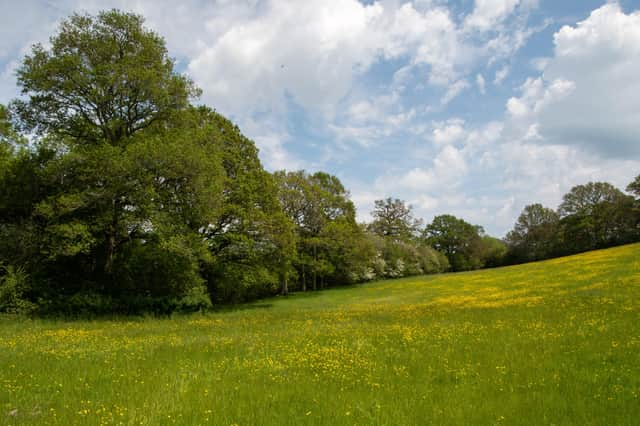Residents campaigning against Horsham’s Buck Barn housing plans have their say on why development should be resisted


The comment piece below was written by the Save West Grinstead Action Group. See also a comment from the Knepp Estate here.
***
The 420 acres of New House Farm, Buck Barn have been designated as a possible strategic site for a development of 3,500 houses, three schools, a small industrial site, a health centre and community facilities.
Advertisement
Hide AdAdvertisement
Hide AdThe farm is bounded to the west by the A24, to the south by the A272 and to the east by the Downs Link. It is crisscrossed with ancient green lanes, bridleways and footpaths.
This precious area of the Sussex Weald has essentially been undisturbed for hundreds of years. The greenfield site contains streams edged by ghyll woodland and water meadows that feed into the Adur River.
It abounds with ancient hedgerows where the nightingale sings in May and June and many native birds nest undisturbed.
At the highest point, on the north of site offers wide views as far as Chanctonbury Ring. Old records show there was once a farm house here aptly named Heaven. Three massive oaks trees still stand nearby, probably 300 years old.
Advertisement
Hide AdAdvertisement
Hide AdThis beautiful farmland at New House supports an abundance of wildlife in its streams, woodlands and hedges, offers shelter in its undulating fields and hidden gullies and supports an ecosystem from invertebrates to larger animals like badgers, foxes and deer.
Furthermore the farm lies adjacent to the Knepp Estate whose rewilding programme has been internationally recognised and applauded for attracting and establishing habitat for endangered and vulnerable species.
New House Farm already benefits from migration of some of these species such as the Emperor butterfly and turtle doves.
The development proposed on New House farm would destroy all this forever. There would be no possibility of a nature corridor through what amounts to a new town. Any development on this site is an unsurmountable setback for a Nature Recovery Network.
Advertisement
Hide AdAdvertisement
Hide AdThe proposed building of 3,500 houses, schools, etc. on a greenfield site constitutes a ‘new settlement’ will require construction of all infrastructure – new roads, power and water and sewage management.
It will generate immense pollution from light, noise and people’s daily living activity. In reality this means huge earth movers marching across pastures. Burying thousands of tons of concrete and plastic, Tarmacking acres of fields and removing established woodland and hedgerows.
The government is now discouraging building on greenfield sites and there is an opportunity here to show commitment to this long-awaited policy.
As a new settlement standing away from existing developments, seven miles from the local station with no local employment and no public transport, people will be forced to drive off site.
Advertisement
Hide AdAdvertisement
Hide AdThe impact on already overcrowded and struggling roads and lanes will be felt not only locally but far and wide.
Vehicle emissions in Cowfold village, just three miles away, are closely monitored and are presently in excess of national safety recommendations.
A potential further 7,000 journeys per day will simply be a disaster.
The development of New House Farm, Buck Barn is clearly unsustainable and would pose a major blow to the implementation of the Wilder Horsham project, nature recovery in West Sussex and the principles embedded in the Environment Act.